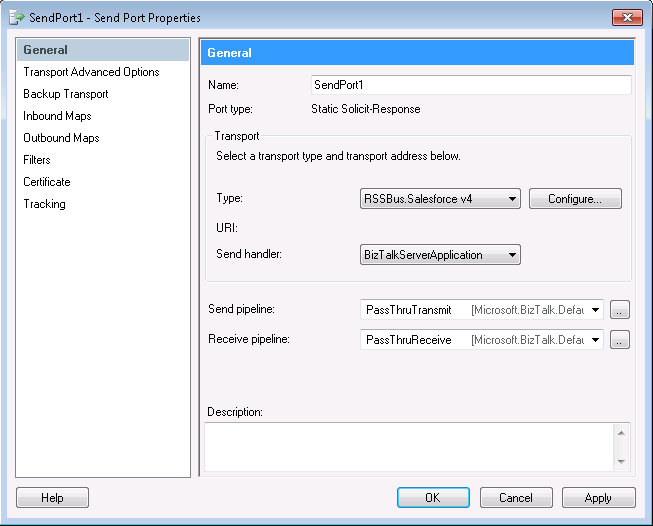Discover how a bimodal integration strategy can address the major data management challenges facing your organization today.
Get the Report →Configure a Solicit-Response Send Port for the CData BizTalk Adapter for Kintone
Use the adapter for Kintone with a solicit-response send port to execute updategrams and data manipulation SQL in BizTalk.
This section provides step-by-step instructions for creating, configuring, and testing a static solicit-response send port using the CData BizTalk Adapter for Kintone. You can use a static solicit-response send port to execute commands and access the results in BizTalk. You can use send ports to execute updategram commands, SQL commands, and stored procedure operations.
Create and Configure the Send Port
Create a static solicit-response send port and configure it to use the adapter as its transport type.
- If you have not already done so, open your BizTalk application in the BizTalk Administration Console.
- In the node for your BizTalk application, right-click Send Ports and select New -> Static Solicit-Response Send Port. The Send Port Properties dialog is displayed.
- In the Send Port properties, enter a name for the receive port.
- In the Transport Type menu, select CData.Kintone;.
- In the Send pipeline menu, select the default option, PassThruTransmit.
- In the Receive pipeline menu, select the default option, PassThruReceive.

Configure the Adapter
Define the command the adapter will execute in the Transport Properties dialog.
- In the send port properties, click the Configure button. The Adapter Transport Properties dialog is displayed.
- In the CommandType property, select the command type you want.
- If you want to execute an SQL command, enter the command in the SQL Command box.

Configure the Connection to Kintone
Configure credentials and other properties required to connect to Kintone in the Connection String Options dialog.
- In the send port properties, click Configure. The adapter properties dialog is displayed.
- Click the button in the Connection String property. The Connection String Options dialog is displayed.
- Enter the connection properties. Below is a typical connection string:
User=myuseraccount;Password=mypassword;Url=http://subdomain.domain.com;GuestSpaceId=myspaceidIn addition to the authentication values, set the following parameters to connect to and retrieve data from Kintone:
- Url: The URL of your account.
- GuestSpaceId: Optional. Set this when using a guest space.
Authenticating with Kintone
Kintone supports the following authentication methods.
Using Password Authentication
You must set the following to authenticate:
- User: The username of your account.
- Password: The password of your account.
Using Basic Authentication
If the basic authentication security feature is set on the domain, supply the additional login credentials with BasicAuthUser and BasicAuthPassword. Basic authentication requires these credentials in addition to User and Password.
Using Client SSL
Instead of basic authentication, you can specify a client certificate to authenticate. Set SSLClientCert, SSLClientCertType, SSLClientCertSubject, and SSLClientCertPassword. Additionally, set User and Password to your login credentials.
- Click Test Connection to verify the values and test connectivity.
 The updategram tutorial for the adapter for Kintone walks through the steps to create a simple application that uses a solicit-response send port to execute an insert updategram to Kintone.
The updategram tutorial for the adapter for Kintone walks through the steps to create a simple application that uses a solicit-response send port to execute an insert updategram to Kintone.






